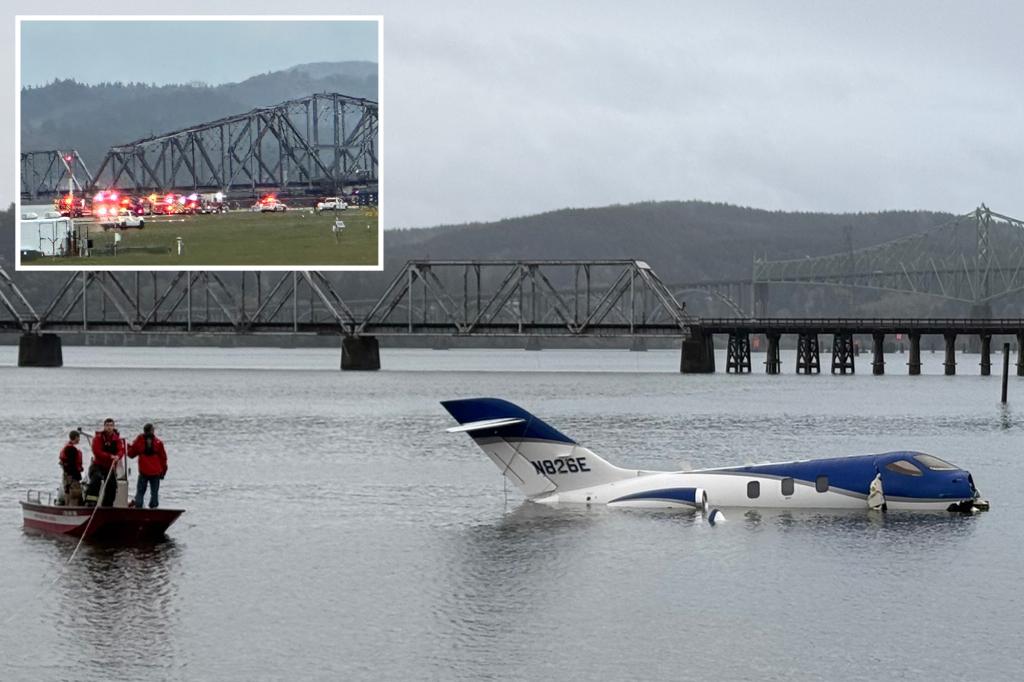Oregon Airport Incident: Plane Skids Off Runway and Plunges into Bay
A commercial aircraft skidded off the runway and plunged into a bay at an Oregon airport on Tuesday morning, triggering a large-scale emergency response. The incident occurred around 8:30 a.m. local time during heavy rainfall, with initial reports indicating no fatalities among the 94 passengers and 6 crew members aboard. Authorities are investigating whether weather conditions, mechanical failure, or pilot error contributed to the dramatic runway excursion.
Emergency Response and Passenger Evacuation
Witnesses described a chaotic scene as the Boeing 737-800 veered left upon landing, overran the tarmac, and slid 200 feet down an embankment before coming to rest partially submerged in shallow water. Airport fire crews reached the aircraft within 90 seconds, deploying inflatable slides and life rafts for evacuation.
“The crew executed textbook emergency procedures,” said Port of Portland spokesperson Elaine Carter. “All passengers were accounted for within 22 minutes, with only minor injuries reported.” Medical teams treated 14 individuals for hypothermia and bruises at the scene before transporting three to nearby hospitals as a precaution.
- Response timeline: First responders on scene in <2 minutes; full evacuation completed in 19 minutes
- Safety equipment deployed: 6 emergency slides, 8 life rafts, and 2 rescue boats
- Environmental precautions: Containment booms placed around aircraft fuel tanks
Investigating the Causes of the Runway Excursion
The National Transportation Safety Board (NTSB) has launched a formal investigation, with preliminary data suggesting multiple contributing factors. Aviation safety expert Dr. Michael Tran analyzed the incident: “Runway 28L has a 7,000-foot landing distance available, which should be sufficient for this aircraft type under normal conditions. However, our radar data shows the plane touched down at 1,800 feet past the threshold—well into the touchdown zone.”
Key factors under scrutiny include:
- Heavy rainfall reducing braking effectiveness (0.25 inches fell in the hour preceding the accident)
- Crosswinds gusting to 28 knots at the time of landing
- Maintenance records showing the aircraft’s autobrake system underwent servicing 36 hours prior
Aviation Safety Statistics and Context
While rare, runway excursions account for 22% of commercial aviation accidents worldwide according to FAA data. The Oregon incident marks the third such event at U.S. airports in 2023, compared to five total in 2022. Modern aircraft are designed to withstand water landings, with ditching survival rates exceeding 88% based on NTSB historical data.
“This could have been far worse,” noted former airline captain Sarah Wilkins. “The shallow angle of descent into protected waters, combined with the crew’s swift actions, created optimal conditions for survival. It demonstrates why we train for these scenarios.”
Environmental Impact and Recovery Operations
Environmental teams established a 500-foot containment zone around the aircraft as a precaution against potential fuel leaks. Early assessments indicate minimal ecological damage, with only 12 gallons of jet fuel released into the bay—well below reportable quantities under federal regulations.
Salvage operations face unique challenges:
- Tidal fluctuations limiting crane access to 6-hour windows
- Need to preserve aircraft integrity for investigation
- Protection of sensitive marine habitats during recovery
Passenger Accounts and Psychological Support
Several passengers provided harrowing accounts of the incident. “We hit the runway hard, then kept going—like a car on ice,” recalled business traveler Mark Henderson. “When we stopped in the water, people stayed remarkably calm. The flight attendants had us evacuating before most of us processed what happened.”
The airline has arranged counseling services for all passengers and crew, a standard protocol following significant aviation incidents. Psychological studies show that 12-15% of accident survivors experience acute stress symptoms requiring professional support.
Broader Implications for Aviation Safety
This incident renews focus on runway safety area (RSA) requirements implemented after a 2008 FAA mandate. While 72% of U.S. commercial runways now meet 1,000-foot RSA standards, budget constraints have delayed full compliance at smaller airports. The Oregon airport’s RSA measured 600 feet at the accident location.
Aviation authorities will likely examine:
- Braking performance standards on wet runways
- Enhanced pilot training for crosswind landings
- Accident mitigation systems like engineered material arrestor beds
Next Steps in the Investigation
The NTSB expects preliminary findings within 30 days, though the full investigation may take 12-18 months. Investigators will analyze the flight data recorder, cockpit voice recorder, and air traffic control communications. Meanwhile, the airport has reopened its parallel runway while crews work to remove the aircraft.
For travelers concerned about flight safety, experts recommend reviewing airline safety records and understanding emergency procedures. As this incident demonstrates, proper training and calm response can mean the difference between a close call and catastrophe.
See more Update My News



